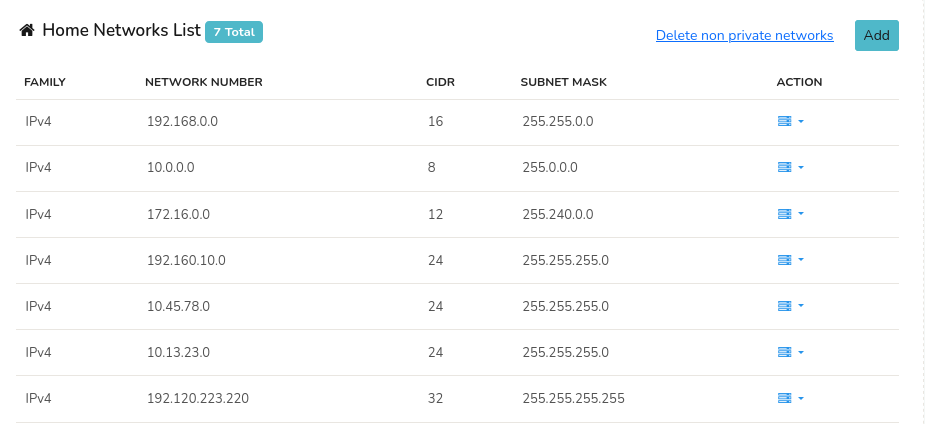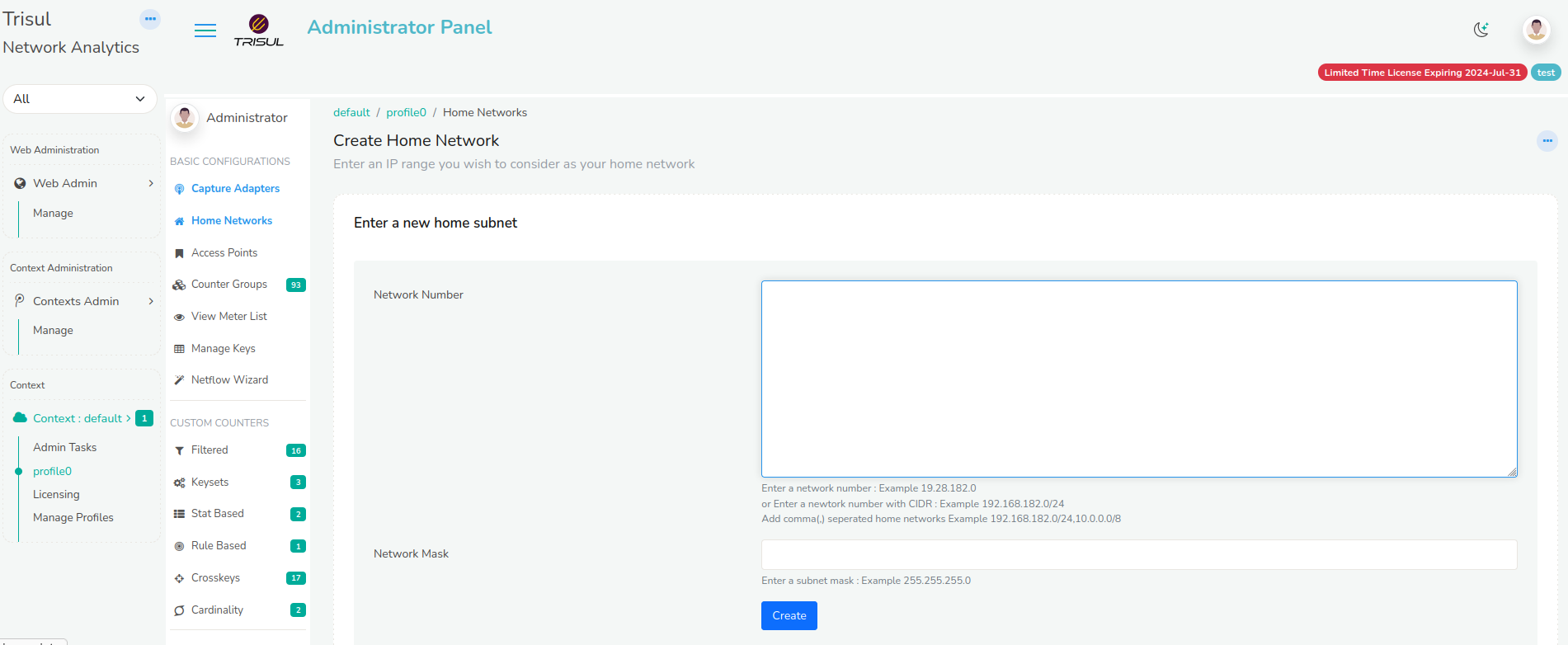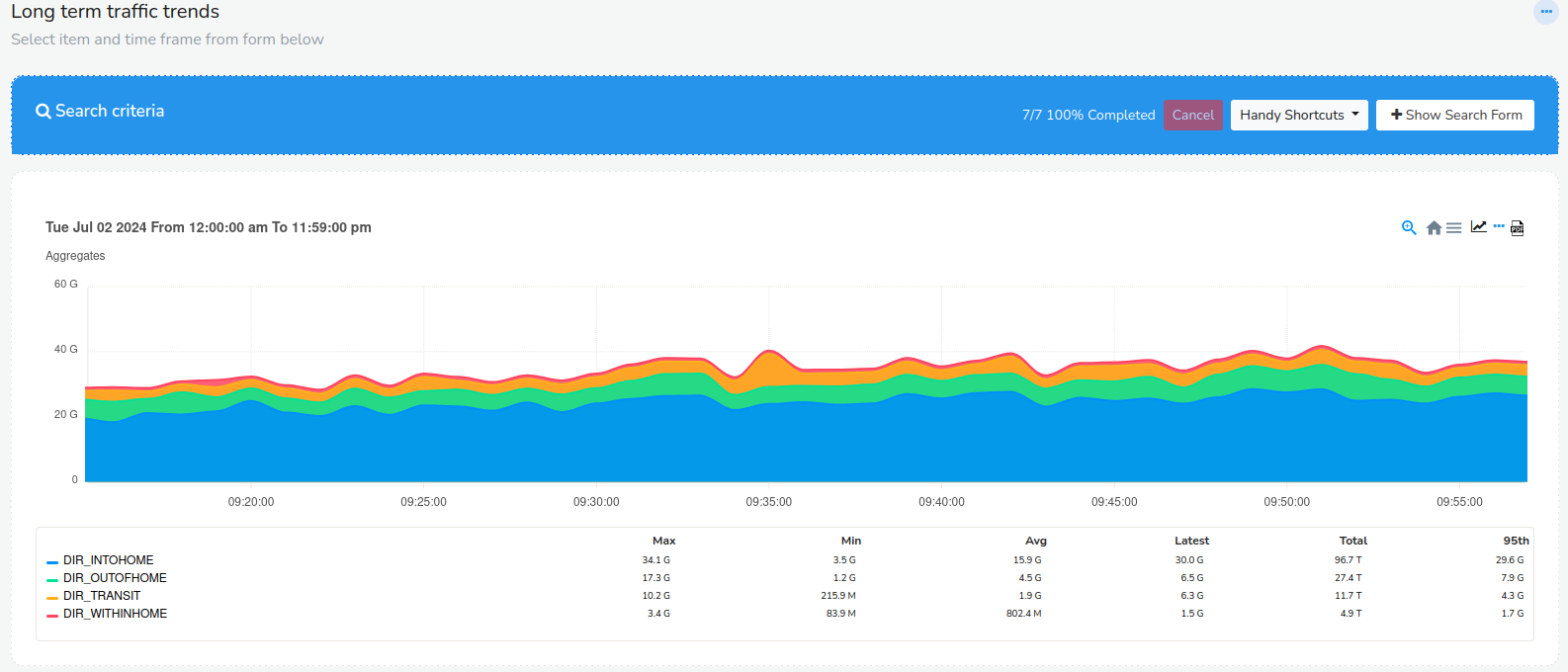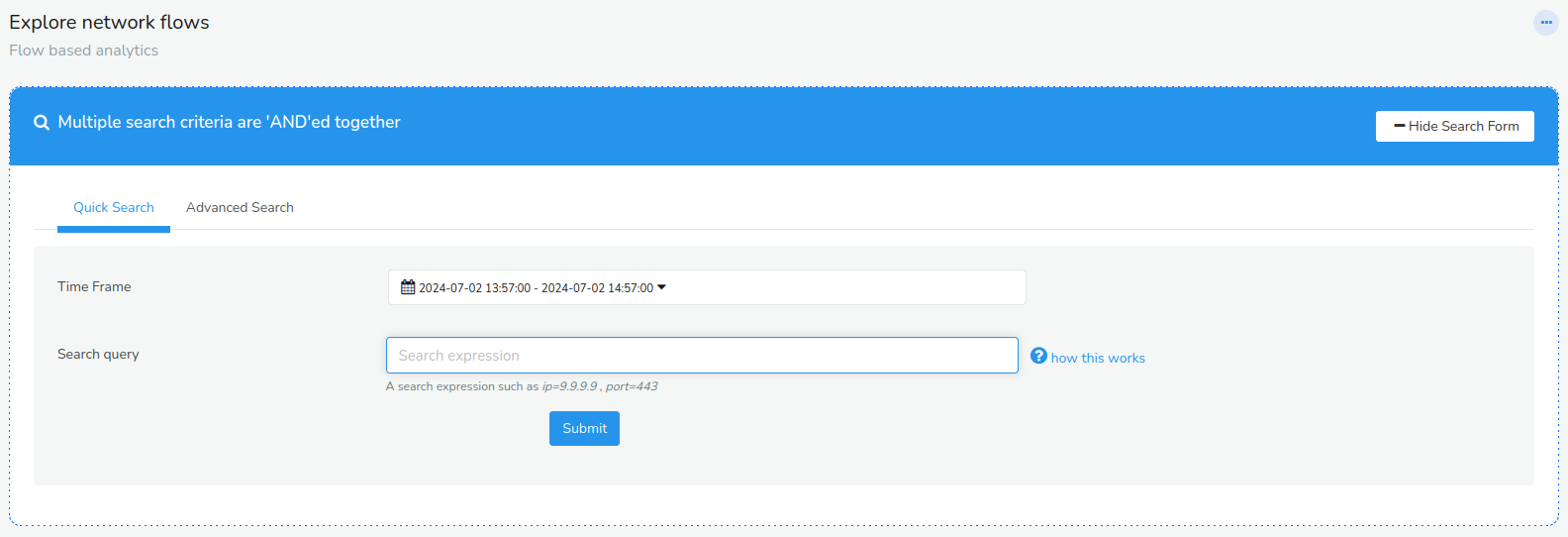Home Networks
Several features of Trisul depend on being able to tell which IPs belong to your home network and which are to be treated as external. The rough idea is that hosts in your home network are thought to be under your administrative domain. For these features to work accurately you need to tell Trisul which IPs constitute your “Home Network”
Trisul by default considers the RFC1918 private IP ranges 10.0.0.0/8, 192.168.0.0/16, 172.16.0.0/12 to be home networks. For most users who deployed NAT this should be sufficient. There is nothing more to do here.
Add a New Home Network
It pays to be accurate about your home network as it can impact several reports and views. If you want to add a new subnet to your home network or edit an existing entry, follow these steps.
👉 (login as admin) Go to Context: Default → Profile0 → Home Networks
You are shown the following screen

Figure: Showing a list of configured Home Network subnets
-
Click on Add button on the upper right hand side.
-
Enter an IP and a subnet mask (eg, 59.92.0.0 and 255.255.0.0) that represents your home network.
-
Click Create button to add a new home network.
Adding Home Networks in Bulk
When you click on “Add” in the Home Networks screen you can see the Add form below

Figure: The add subnetworks screen
Here you can:
Add one by one
Add one by one a single network number in "Network Number" and subnet mask in "Network Mask"
Add in bulk
Simply copy paste a series of comma separated or one-per-line networks in CIDR format in "Network Number". When using the CIDR format you can leave the "Network Mask" field blank.
Action Button
- Click on the action button against any network number and delete any single home network by clicking the “Delete” option.
- Click on the action button and click "Edit" to modify the network number and network mask. And click "Update".
Delete Non Private Networks
You can click the “Delete non private networks” button on the top right to delete all the elements in bulk except the three built-in private ranges. Use this option if you want to add the home networks in bulk later.
Viewing Traffic Direction
The Home Network is a crucial part of Trisul reports. Apart from the “Internal Hosts”, “External Hosts” classification - you can see the following data.
Metrics in the Aggregates Counter Group.
👉 Login as user and Go to Tools → Long Term Traffic
- Counter group = Aggregates
- Meter = Total
- Keys to the Item = DIR_INTOHOME, DIR_OUTOFHOME, DIR_TRANSIT, DIR_WITHINHOME
The following chart gives you the traffic details in each direction.

Figure: Directional chart determined by the Home Network settings
Flows
Trisul has the ability to use Flow Taggers to tag each flow with a direction hint based on the endpoint Home Addresses.
- Enable the TagFlowsWithDirection setting in the NetFlow configuration file
- You can then go to Tools → Explore Flows to search for flows with the appropriate tag.
- For example to see all Transit flows , enter
tag=[dir]transitin the tool's search query.

Figure: Search for directional flows using a custom flow tagger
Also see user guide sections: Flow Taggers, Explore Flows